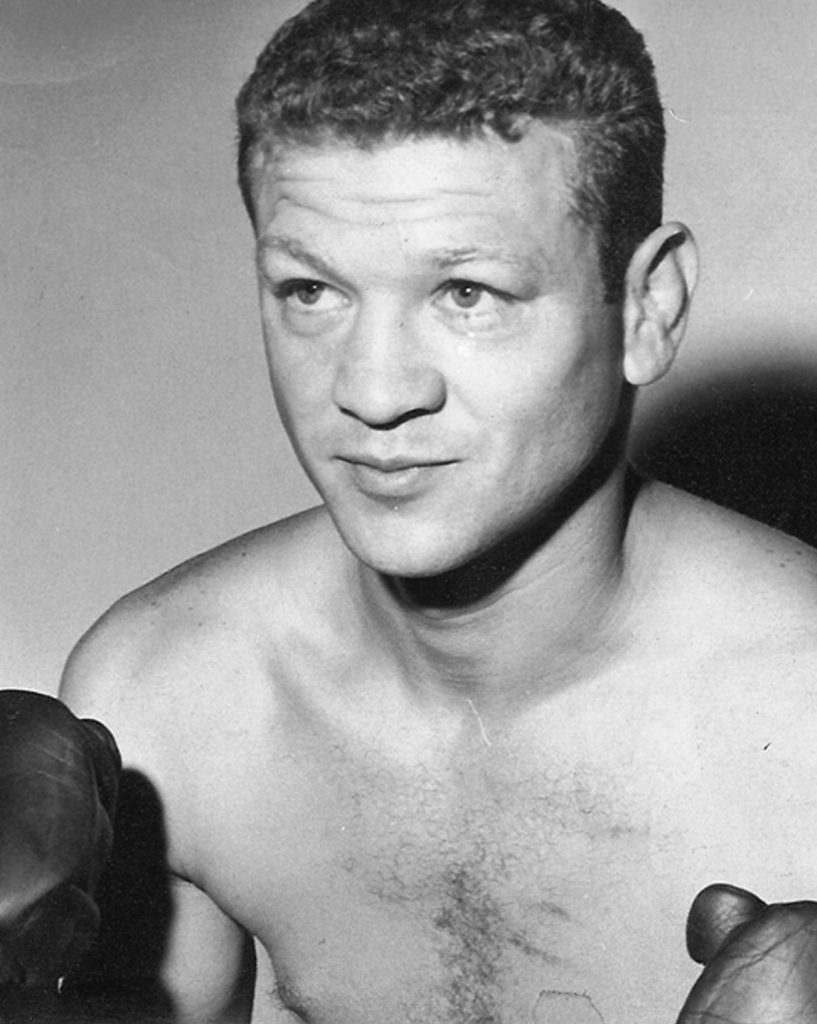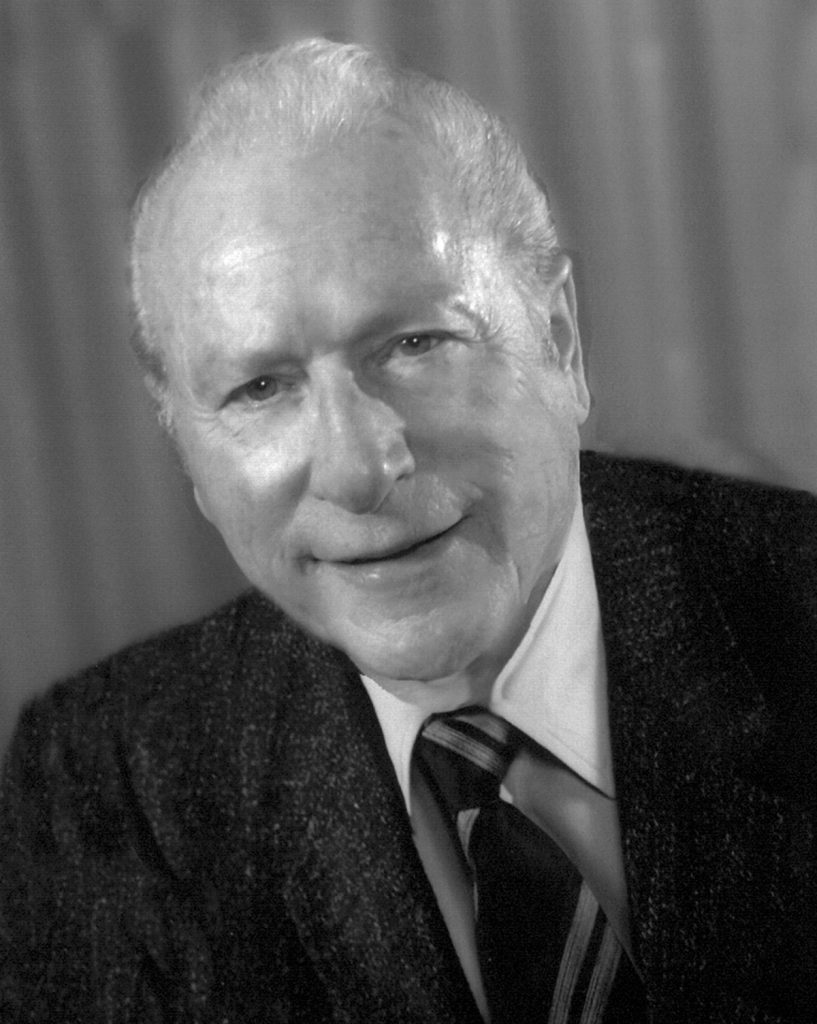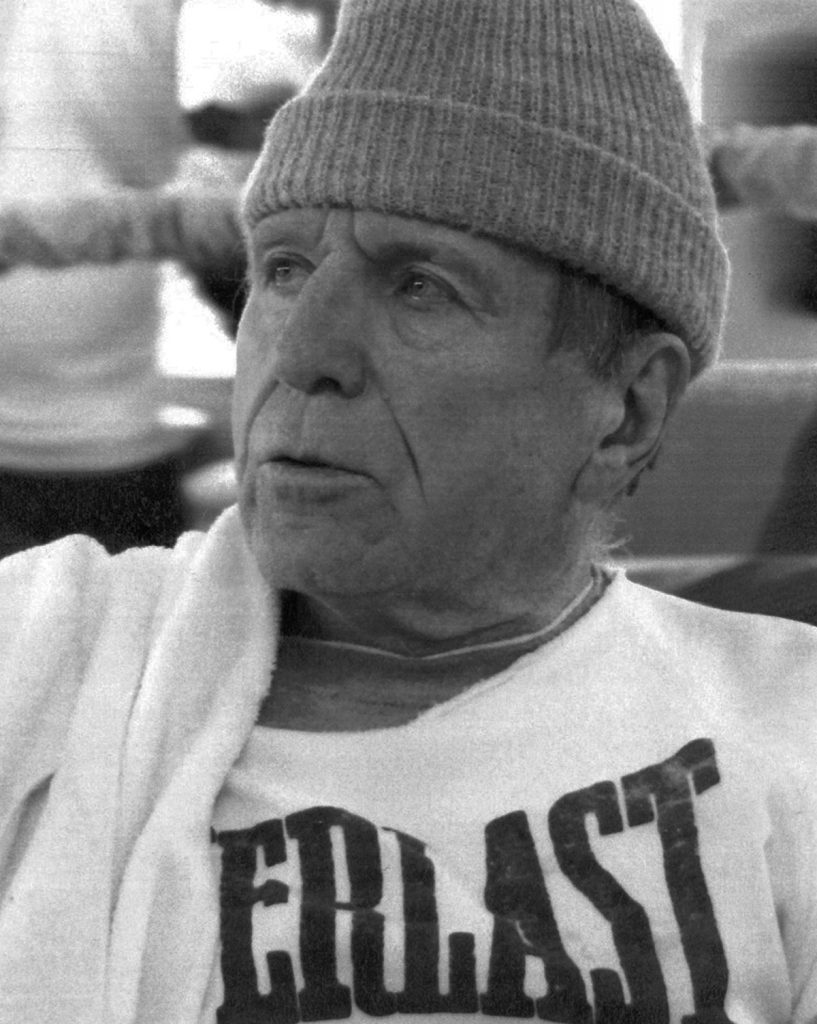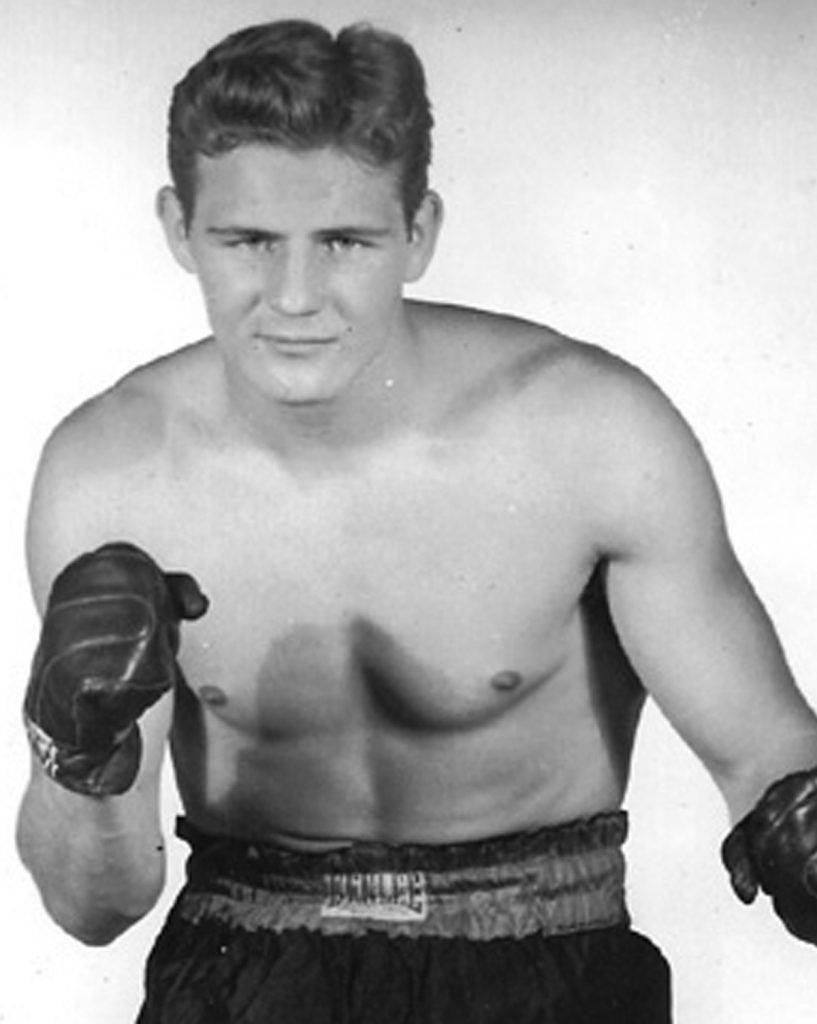Class of 2008

LARRY BOARDMAN
We think nothing today of seeing 16-year-old professional tennis players or golfers. But imagine being 16 and beginning a career as a professional fighter.
That’s what Larry Boardman did in December of 1952 when he stepped into the ring to face Tony Grosse in West Palm Beach, Fla. Boardman’s father Sam had moved his family from Connecticut to Florida, where it was legal to fight under the 18. Sam knew he had a prospect on his hands. Boardman beat Grosse and went on to win his first 14 professional bouts.
Boardman was once the No. 2 lightweight in the world while compiling a 45-10-1 record. Boardman is known as the man who sent Hall of Famer Sandy Saddler into retirement. Saddler, who had legendary bouts with CBHOF inductee Willie Pep, lost a unanimous decision to Boardman in April of 1956. That was one of only 16 losses Saddler had in 162 bouts. Boardman also defeated Lulu Perez, another fighter who had a win over the legendary Pep.
Boardman had a meteoric rise, but couldn’t quite break through and get that world title. His career ended with a victory over Chuck Taylor in August of 1963. Boardman was only 27 when he hung up his gloves for good.
Upon moving back to Connecticut, Boardman worked for Sears for more than 25 years before retiring.
Boardman, 72, was born in Marlborough and lived most of his life in Connecticut before retiring permanently to Florida. Boardman remains in good shape and is living comfortably in the Sunshine State.

LOU BOGASH JR.
Lou Bogash Jr. followed in his father’s footsteps — all the way into the Connecticut Boxing Hall of Fame.
Bogash Sr. was inducted in 2006. The induction of Lou Jr. will give the CBHOF its first father-son tandem.
Born in Bridgeport, Bogash served in the Marine Corps where he earned a presidential citation, a good conduct medal and a sharpshooter medal. He boxed for the Marine team where he began to fully develop his love for the sport.
Bogash Jr., 86, has long been a popular figure in Connecticut because of his work as a judge, referee, and heading up the state’s amateur organization for several years. Bogash was a judge for the first Marlon Starling-Donald Curry world welterweight title bout in 1982. It was a controversial split decision that went Curry’s way, but Bogash scored the fight for Starling, also a CBHOF inductee.
It is in the amateur ranks, however, where Bogash Jr. made his mark.
By 1987, Bogash had already refereed over 5,000 rounds, including collegiate tournaments. It was in 1987 that Bogash was honored as the Connecticut Boxing Guild Man of the Year, In 1991, USA-ABF Boxing held elections that resulted in Bogash being named president of four existing clubs in Connecticut. He was also elected as a commissioner on the Colorado Junior Olympic board.
In 1994, Bogash, along with CBHOF inductee Willie Pep, was honored for his work by the Cauliflower Boxing Association in Los Angeles. In 1995, Bogash was instrumental in getting Russian and Cuban amateur teams to participate in amateur bouts in Connecticut. In 1996, Bogash was honored by the Connecticut Sportswriters Alliance for helping revitalize and restore amateur boxing in Connecticut.

“TIGER” TED LOWRY
“Tiger” Ted Lowry may be 88, but he has never acted his age. Still full of life, Lowry, who had his last pro fight in 1953, remains a welcome figure of respect and knowledge on the Connecticut amateur scene. Born in New Beford, Mass., Lowry has worked with amateur fighters in the Norwalk and Bridgeport areas for more than 50 years. He has produced numerous Connecticut and New England amateur champions.
Lowry is a “Gold Coast Johnny Duke” if you will. Duke, one of the finest amateur trainers ever, spent most of his career working with Hartford area fighters and was inducted into the CBHOF in 2005. The late Duke would no doubt be pleased to know that Lowry’s plaque will now hang near his.
Lowry twice fought Hall of Famer Rocky Marciano during his 12-year pro career, taking Marciano the distance in both bouts. Marciano later would acknowledge that Lowry was one of his most difficult opponents. Marciano would retire unbeaten with a 49-0 record. Lowry is the only fighter to twice last the 10-round distance with Marciano.
Lowry also fought fellow inductee Bernie Reynolds three times while compiling a 67-67-10 record. Lowry won once, lost once and had a draw with Reynolds.
Lowry would later become known for his extensive work with amateurs in Norwalk, where he resides. Lowry has received honors from several prominent political figures for his work with young fighters. During World War II, Lowry was a member of the all-black 555th Parachute Battalion, which became known as the “Triple Nickels.”

ROLAND PIER
Based on one incident in his career, you might say Roland Pier was a shoo-in for the Connecticut Boxing Hall of Fame.
Once when Pier was fighting on the undercard of one of Willie Pep’s fights in Venezuela, he was lucky enough to borrow Willie’s shoes. Pier, however, lost the fight and returned the shoes to Pep who in turn lost his fight to Sonny Leon wearing the same shoes. It was only one of two pro bouts Pier had. He had over 100 bouts as an amateur. Pier fought in the Golden Gloves in 1958 and 1959.
Pier, 79, has trained and also taught fighters in some of this country’s premier and historic gyms such as, Stillman’s, Gleason’s and Clancy’s. He has also trained and taught in countries such as England, Italy and Holland. Pier has taught the sweet science at various schools and summer camps and also at police academies in Connecticut.
Pier has trained fighters at Macy’s gym in East Lyme until that gym closed and currently still trains young fighters out of the Whaling City Boxing Club in New London where you can still find him every day from open to close. The profile of boxing in southeastern Connecticut has been raised because of his love for the sport.
Pier has long been one of the state’s finest boxing ambassadors. That is likely to continue as long as Pier is able to step into a ring.

BERNIE REYNOLDS
The late Bernie Reynolds spent most of his career fighting under the radar. He never won a world title or fought for one, but the one thing he did do was win and win often.
Reynolds, a heavyweight from Fairfield, compiled an impressive professional record of 53-13-1. He started his career 12- 0 and won 27 of his first 28 bouts. He fought some of the toughest heavyweights of his era, including Marciano and Ezzard Charles, both of whom were world champions.
Marciano remains acknowledged as one of the greatest heavyweights of all time. He retired with an undefeated record. Yet when Reynolds stepped into the ring against Marciano on May 12, 1952 in Providence, he gave it his all.
An analysis of that fight was described as follows on BoxRec.com. “Reynolds gave a very good account of himself. He clearly outfought Marciano in Round 1. The second round was a slugfest and Marciano’s powerful punches were slowing Reynolds down in the latter stages. Marciano came out to end it in Round 3, but Reynolds was still punching strongly. A terrific right to the jaw which lifted Reynolds off his feet ended it. The arena was a bedlam of excitement as the referee finished his count.”
It’s clear that against overwhelming odds, Reynolds fought with heart and determination, a trademark of his stellar career. He would win the New England heavyweight title by beating “Tiger” Ted :Lowry, who is also part of the 2008 induction class. The two Hall of Famers fought three consecutive times beginning in November of 1949. After a draw, Lowry won one fight and Reynolds won the next.
Reynolds retired in 1953 and lived out his life in Fairfield, where he was a popular and respected member of the community.

GENE TUNNEY
Boxing is a sport often known more for its brutal savagery than being a thinking man’s game, but Gene Tunney was one who began to change all that during his legendary boxing career that would land him in the International Boxing Hall of Fame.
Tunney was a man who dabbled in politics, loved to read, and had a thirst for knowledge. He became a fighter because he was good at it and he knew it. He fought smartly and always had a game plan. Though some felt he had a suspect chin, the truth of the matter is, he was never knocked out and only knocked down once in his career by Jack Dempsey.
Tunney would once say “I found no joy in knocking people unconscious.” He had brilliant footwork, a cagey defense, and most of all, Tunney had a heart.
The CBHOF board of directors debated the notion of inducting Tunney into the Nutmeg State Hall of Fame for several years. Tunney’s boxing resume was hardly in question. He compiled an 81-1-3 record, beat Dempsey twice, including the famed ‘long count” bout in 1927. He was Ring Magazine’s first ever fighter of the year in 1928. Tunney was inducted into the International Boxing Hall of Fame in 1990.
There was a question of residency as Tunney was born in New York. As has been noted in Jack Cavanaugh’s book “Tunney,” however, “The Fighting Marine” moved to Stamford upon retiring in 1928. Tunney lived on 200 acres in an old colonial. He resided in Connecticut for 50 years until his death in 1978. He was active in the Connecticut political scene, often campaigning for democratic candidates, and he once pondered running for senator in 1946. It is clear that Tunney considered Connecticut his home.
Tunney, who often quoted Shakespeare, is buried at Long Ridge Union Cemetery in Stamford. He is a most welcome and worthy addition to the Connecticut Boxing Hall of Fame.

